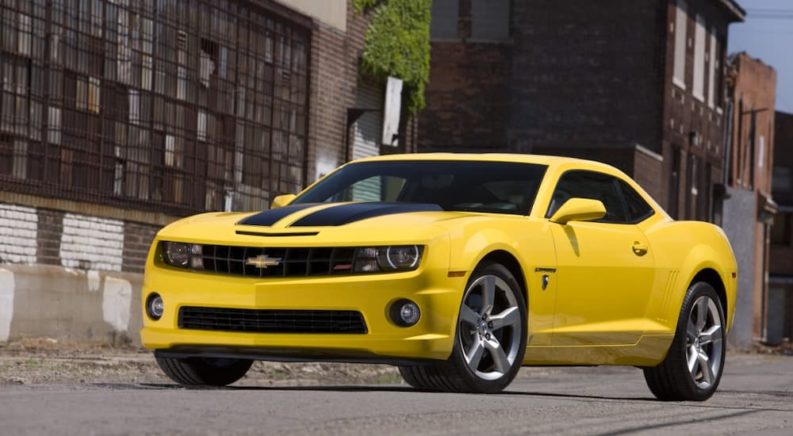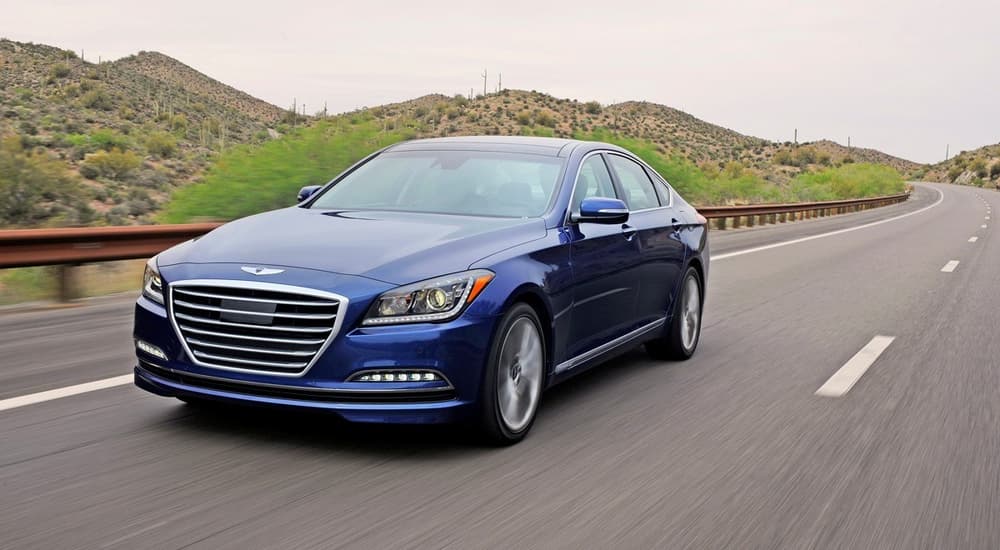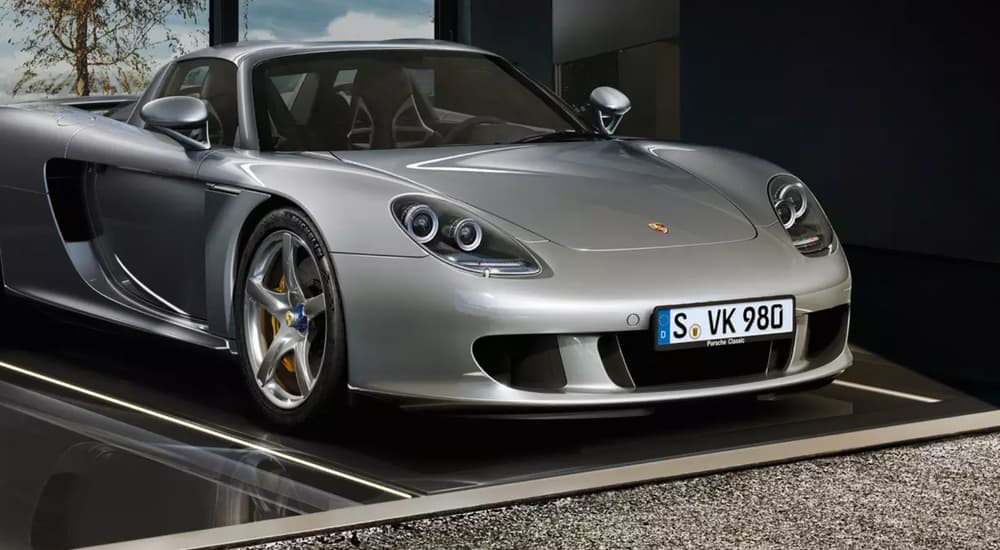Certified Pre-Owned (CPO) programs are a great way for used car shoppers to increase confidence in their purchase, with high initial quality assurances and extended warranties for anything that goes wrong in the short term. Every brand offers its own take, usually varying the age and mileage limits as well as the number of inspection points in the certification process and tweaking their warranty offerings to offer an edge on the competition. Some brands exclude specific models from consideration; Porsche offers coverage plans that can apply longer warranties to older models! But there are some models that Certified Pre-Owned vehicle dealers can’t slap that label on, usually because they’ve aged out of the program.
This automotive statute of limitations doesn’t just apply to mass-market vehicles or entry-level models. There are some seriously awesome cars that you just can’t certify anymore and can only find on the “used” market–or in curated collections. However, we aren’t here to talk about classic cars that haven’t been found on dealer lots for decades. We’re going to explore some cool models that have only recently aged out of CPO eligibility. These diamond-in-the-rough models should serve as examples that CPO isn’t the be-all-end-all of the pre-owned marketplace!
The 5th-Gen Camaro
Technically, most 5th-generation Chevy Camaros had already aged out of GM’s CPO program by 2021, but 2022 marks the year that the entire generation is disqualified by aging out of the 6-model-year limit. These Camaros are no less special today than they were when you could get them with a GM CPO sticker on the window. While it isn’t the flashiest and probably is the cheapest model on this list, the 5th-gen Camaro deserves a special place in the hearts of all enthusiasts for what it represents.
That’s because almost anybody in the US would recognize this as the “Bumblebee” generation whose concept was featured prominently in the Transformers movie franchise. The revival of the iconic muscle car after a 7-year hiatus, with looks hearkening back to its 1960’s origins, was heavily promoted by the partnership between the two brands to the point of inseparability. The design was a hit, as the brand-new 2010 Camaro outsold the Mustang for the first time since 1985; then did it again in 2011 and 2013, reaching 500,000 units by 2015.
While it isn’t the rarest of beasts, this generation featured a variety of notable special editions that won’t be so easy to find. For example, only 1,916 examples were made of the Transformers Edition that featured Autobot decals to closely replicate the movie version, and in SS trim, it came with over 400 hp! Another cool appearance package was the Hot Wheels Edition, a mid-level package with flame decals and ZL1 appearance features that ran for only 1,524 units in 2013. 2012 introduced the 580 hp ZL1 build to the lineup, which was the most powerful Camaro to date and ran the Nürburgring in 7:41 to put itself in the same performance tier as the Lamborghini Murcielago LP460 and Mercedes SLS AMG (a car which was never available as CPO).
And how could one forget the 2014 Z/28? The first American winner of Motor Trend’s Best Driver’s Car award earned its place ahead of the Nissan GT-R and BMW M4 thanks to the 505 hp 7.0L LS7 V8 engine and a complete track aerodynamics kit. This is the car that established once and for all that the new Camaro was made for more than straight-line drag racing.
Hyundai Genesis / Equus
I’ve chosen to lump the Hyundai Genesis and Hyundai Equus luxury sedans together, as they collectively manifest the inspiration for the spinoff Genesis brand that is currently taking the world’s luxury brands to the task thanks to offering unique style and remarkable comfort at unbeatable prices. After 2016, the Genesis Motors brand was established, and these Hyundais were succeeded by the Genesis G80 and G90, respectively, which means every single Hyundai Genesis and Equus has aged out of Hyundai’s CPO program as of 2022. Don’t let this deter you from giving either of these nascent luxury cars a chance–they surprised the entire industry for good reason!
The South Korean automaker asserted itself with the Genesis and Equus, leveraging the self-developed automation that enables Hyundai/Kia to offer top-class warranties and unbeatable value in economy cars to do the same thing in the premium market. While better luxury cars from Lexus, Cadillac, and Mercedes certainly exist, the Genesis and Equus undercut them all with sheer value. Engines with over 400 hp and the Genesis’ Lotus-tuned suspension easily manage the weight of the boat-like saloons. A broad list of standard luxury and safety technology features, roomy, well-appointed interiors, and whisper-quiet cabins made them no-brainers for luxury shoppers who weren’t tied to a brand name.
The Genesis brand is on the ascent today, earning recognition as a world-class premium moniker even if the Hyundai models that inspired it slid under the luxury radar. They should continue to represent high-value offerings on the used market today, with some of their factory warranties good until 2026, even without the CPO program benefits. To a car enthusiast who isn’t necessarily interested in carving canyons, the Equus and Genesis represent the beginning of a shift in the automotive industry and will serve as excellent, unique daily drivers.
Mercedes-AMG G 63 6×6
Mercedes is the only automaker I researched for this list (of the 13 or so most popular brands in America) that explicitly excludes certain models from its CPO program, at least in disclaimers that I could find online. That being said, models like the SLR McLaren and SLS would have aged out of the Mercedes CPO program by now anyway. There is another Mercedes, however, which was fully disqualified from CPO consideration only recently as production had halted in the 2015 model year, with fewer than 200 examples in existence: the AMG G 63 6×6.
For those who don’t already know, this Mad Max monstrosity is a classic AMG-spec G-wagon, but with six-wheel drive. That’s right, six. Running with this idea, Mercedes-AMG pursued the concept of the ultimate off-roader and created a vehicle that must be considered in any conversation about the off-roading G.O.A.T. The 37″ tire assemblies are mounted on independent portal axles, a design which is offset from the wheel centers to add roughly 18″ to the imposing ground clearance it already has and leads to 39.4″ (1 meter) of water fording capability.
A total of 5 locking differentials provides full control over traction, and the 5.5L V8 twin-turbo engine with 544 hp provides enough oomph for a sub-8.0 zero to 60 time–an impressive feat for anything weighing well over 8,000 lbs and traveling in any direction but down. Top Gear’s segment on the 6×6 provides a fun demonstration of what it looks like in action, which is quite likely the closest any of us will ever get to one anyway.
The Mercedes-AMG G 63 6×6 represents one of those times when executives decided to put the company’s money to use on something awesome just for the hell of it. What’s the value of possessing the physical manifestation of that moment of madness? By early 2021, auction prices had already shot clear of $1 million. Clearly, the normal rules simply don’t apply to used vehicles of a certain caliber, and the 6-wheel Mercedes-AMG G-wagon easily classes among them.
Porsche Carrera GT
“Wait a minute,” you might be saying, “the Carrera GT has been out of production since 2007, and I thought we were looking at cars that are just outside of CPO eligibility?” You’d be right–but so am I. The 2007 Porsche Carrera GT marked the end of a production run of fewer than 1,300 cars, but thanks to Porsche’s nearly-unthinkable 13-year CPO eligibility period, it was only disqualified in 2021! No brand on Earth matches Porsche’s CPO program for how long their cars stay eligible. Even so, with generally low mileage and one of the best reputations on Earth, no Porsche is ever out of style, and few possess the gravitas of the Carrera GT.
The V10 supercar has transformed from commercial flop to absolute legend during its many years of CPO eligibility. Back in the day, there just wasn’t much demand for a half-million-dollar supercar from a brand whose next most prestigious model was a fully-loaded $150k 911. It had the chops to compete with–and even out-perform–competitors like the Lamborghini Murcielago and Ferrari Enzo but was a tough sell for dealers worldwide. Values even dropped during the recession that followed the end of its production run; today, however, the Carrera GT is setting records on Bring a Trailer with prices exceeding $1.9 million for low-mileage examples–which would have absolutely qualified for Porsche’s CPO program as recently as two years ago!
Its carbon fiber monocoque chassis was made by the same people who made the Enzo’s. Weight-saving decisions like carbon fiber seats and door inserts balance out the inclusion of creature comforts like air conditioning, and the telescoping spoiler automatically elevates at speeds over 70 mph. It even has a built-in navigation system (not to say its interface is usable by modern standards, but it’s there)! Racing-style color-coded center lock nuts might be popular now, but they were an unusual feature for the era and stand out to anyone who knows. All to say that this thing is cool, and that’s before listening to the piercing howl of the 605 hp V10 engine at 8,000+ rpm.
The Carrera GT is regarded today as the last truly analog supercar. Even the Enzo used an automated manual with paddle shifters, but the GT’s was 100% manual. The wooden shifter knob is placed high up on the center console, inches away from the steering wheel for easy wheel-to-stick-to-wheel hand movements. The traction control is defeated with a button–the closest control button to the driver–and the stability control is literally non-existent. Combined with a RWD powertrain and a hair-trigger throttle control system that loves to either stall or spin the tires, you’ve got the recipe for a car that is simultaneously revered, worshipped, and feared.
The Porsche Carrera GT has become an all-time legendary supercar. There aren’t many of them out there, and it’ll cost nearly $2 million on the private market to get your hands on one. It would be dubious to claim that any have ever been sold through the CPO program instead of privately or through auctions, but now we can be certain that it’ll never happen again. Although no Carrera GT will ever again be sold with a factory-backed warranty, for some reason, I don’t think its current and prospective owners really care.
Ditching the CPO Security Blanket
Don’t get me wrong–the existence of certified pre-owned programs is great for dealers and buyers alike. Dealers can maintain the value of their inventory, and buyers get nearly the same degree of confidence as they can with a new car. But that doesn’t mean that shopping for used cars outside of the various CPO programs is all bad. Examples like these diamond-in-the-rough models illustrate that even when they no longer qualify for factory warranties, elite supercars and affordable enthusiast cars alike are no less precious. As the saying goes, after all, “A diamond is forever.”






